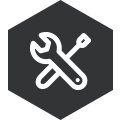Your driveline does a lot of quiet work, moving power from the engine to the wheels so your vehicle accelerates, turns, and cruises without drama. When something in that chain wears out, small noises or vibrations can quickly turn into bigger problems. This guide breaks down driveline repairs and driveline service in plain language so you know what to watch for, what to fix, and when to schedule help.
What Is the Driveline and Why Does It Matter for Everyday Vehicle Maintenance?

Think of the driveline as the chain of parts that carries power from the engine to the transmission, through the drive shafts (or a single driveshaft), into the differentials, and finally to the wheels. When everything is working together, your vehicle feels smooth, quiet, and confident on the road. When something’s off, even by a little, you may feel vibration, hear odd noises, notice rough acceleration, or lose performance and speed.
Why it matters:
- A healthy driveline prevents premature part failure and costly repair bills.
- Proper lubrication and inspection reduce stress on gears, joints, and bearings.
- Balanced components protect the rest of the powertrain from wear and tear.
- Catching a leak or looseness early is an easy fix compared to a major break later.
Fact: Driveline issues tend to get worse with time, miles add up, grease breaks down, and parts can fail if they aren’t inspected and serviced on a schedule. Good maintenance is what makes the rest of your car run right and keeps your mind at ease.
When Should You Get Driveline Service to Prevent Bigger Problems?

Driveline service is a preventive routine; inspect, clean, lubrication, re-torque fasteners, check for leaks, and evaluate wear on moving parts. Many drivers wait until they’ve heard a clunk or buzz, but that’s often too late. Use these cues instead:
- Mileage and use: If you tow, haul, or drive in dust, water, or extreme heat, you’ll want shorter service intervals.
- Symptoms you notice:
- New noises (clicks, clunks, hums, droning that changes with speed)
- Shudder on acceleration or when turning
- Vibration that eases when you let off the gas
- Damp spots under the transfer case, differentials, or at joints
- Inspection findings: Small play in universal joints, surface rust near seals, or an out-of-balanced driveshaft.
A practical plan:
- Have the driveline inspected whenever you do major fluid services or tire rotations.
- Replace worn parts proactively (especially universal joints).
- Keep a simple schedule, seasonal checks if you drive a truck, tow, or go off-road.
How Do Universal Joints and Driveshafts Work, and What Noises Tell You They Need Repair?

Universal joints (often called U-joints) allow the driveshaft to transmit power at an angle while the suspension moves. A dry or worn U-joint can bind, rattle, or seize. The driveshaft (or multiple drive shafts on some layouts) must spin true; if it’s bent, dented, or out of balance, you’ll notice vibration at certain road speeds.
Warning signs to watch for:
- Clicking or clunking when shifting from drive to reverse
- Squeaking at low speeds that changes as you accelerate
- Vibration that peaks between 40–60 mph
- Visible rust-colored dust near a U-joint cap (a clue that needle bearings are dry)
Why fast action matters:
- A failing U-joint can break, damaging the transfer case, differentials, or exhaust.
- An out-of-balance driveshaft adds stress to bearings and seals, leading to leaks and collateral problems.
What a good driveline service does here:
- Checks end play and smooth motion of joints
- Verifies balanced rotation of the driveshaft
- Replaces U-joints with the right fitment and proper lubrication (if serviceable)
- Road-tests to confirm the fix and restore smooth performance
What Role Do Differentials, Gears, and Lubrication Play in Driveline Performance?

Your differentials split power side-to-side while allowing the wheels to rotate at different rates in a turn. Inside are ring and pinion gears, bearings, and sometimes clutches or limited-slip mechanisms. These rely on the correct fluid type, level, and quality. Low or contaminated fluid leads to metal-on-metal contact, heat, and rapid failure.
Maintenance musts:
- Fluid type matters: Use the specified gear oil and additives (if required for limited-slip).
- Intervals depend on use: Towing, off-road, or water crossings shorten fluid life.
- Listen and feel: A whine that changes with speed, a growl in a curve, or chattering on tight turning can point to differential wear or low lubricant.
Quick checklist:
- Inspect for leaks at axle seals and the differential cover.
- Confirm vent operation (a clogged vent can push fluid past seals).
- Service with the correct torque on cover bolts and fill plugs.
- After service, test drive and recheck for seepage.
How Do Heavy Duty Trucks and Four Wheel Drive Systems Change Driveline Care?

Heavy duty trucks and four wheel drive (4WD) setups raise the stakes. Towing adds load; bigger tires and lift kits change angles; off-road trips invite water, mud, and grit into seals.
What to plan for:
- More frequent inspections of universal joints, carrier bearings, and axle seals
- Transfer case fluid checks (and changes) on time, more often if you tow or off-road
- Differentials are serviced sooner, especially after water exposure
- Angle and balanced checks if you’ve changed ride height or geometry
Why this matters:
- Extra load multiplies stress on gears, bearings, and joints.
- A small issue in a heavy-duty application can escalate fast and worse.
- Staying ahead of wear keeps your equipment reliable when you need it most.
What Is a Transfer Case, and How Do Drive Shafts Stay Balanced for Smooth Acceleration and Speed?

On four-wheel-drive and many all-wheel-drive vehicles, the transfer case splits torque front-to-rear and often offers low-range gearing. It contains chains or gears, clutches, bearings, and seals, each needs correct fluid and periodic inspection. A low fluid level or leak can cause skipping, binding, or even total failure.
Meanwhile, drive shafts must be straight and balanced. A small dent or bent yoke can create vibration that feels like a tire problem but isn’t. Proper phasing of joints (the orientation of U-joints relative to each other) is critical to cancel out speed fluctuations and keep acceleration smooth.
Signs your transfer case or shafts need attention:
- Grinding, whirring, or clunking only when 4WD is engaged
- Shudder on launch or under load
- Vibration at highway speed that persists after tire rotation or balancing
- Drips or wetness along the case or at slip-yokes
Service basics:
- Verify correct fluid specification and level
- Inspect for play at slip-yokes and output shafts
- Check mount condition (worn mounts can mimic driveline vibration)
- Road-test in multiple modes (2H/4H/4L where applicable)
How Do Shops Diagnose Driveline Problems and Fix Them with Quality Parts and Expertise?

Good shops don’t guess, they observe, measure, and confirm. A typical diagnostic path might include:
- Interview: What you heard, when you noticed it, what speed or turning causes it
- Visual inspection: Look for leaks, rust dust at joints, torn boots, loose fasteners
- Mechanical checks: Measure U-joint play, test bearing preload, verify balanced shaft condition
- Road test: Duplicate the symptom to isolate the system
- Targeted repair: Replace worn parts, set proper torque, verify lubrication, and re-test
What separates a solid driveline repair experience:
- The right equipment (presses, balancing fixtures, precision measuring tools)
- Technician expertise and understanding of different types of layouts (RWD, FWD-based AWD, longitudinal AWD, heavy-duty configurations)
- A clear explanation of options, costs, and timelines
- A commitment to a fast turnaround that doesn’t sacrifice quality
Which Symptoms Mean “Fix It Now” and Which Can Wait Until Your Next Scheduled Service?

Some symptoms are immediate red flags; others can be monitored briefly. Use this quick guide:
Fix it now:
- Clunking during gear changes or sharp on/off throttle transitions
- Vibration that gets worse with speed or load
- Fresh leaks at the transfer case or differentials
- Noticeable play in universal joints or driveshaft components
- Burning smell after highway driving
Schedule soon:
- Mild hum that doesn’t change with cornering
- Slight seep at a cover gasket with no drops on the driveway
- Preventive driveline service due soon, but no symptoms yet
Remember, delaying a small repair often costs a lot more later. A minor issue can break other components if ignored.
Where Can You Schedule Fast Turnaround Driveline Repairs You Can Trust?

Metric Motors and Loveland Tire & Service logos side by side with Colorado LTS shield emblem.
If you’re ready to find help that treats your vehicle right, choose a local team with the knowledge, years of experience, and the right services for driveline repairs, driveline service, universal joints, drive shafts, differentials, and transfer case care. Look for clear communication, verified fitment of parts, and testing that proves the fix.
Want a fast turnaround and straightforward expertise you can trust? Schedule driveline repairs at Automotive Repair Loveland to contact a team that makes it easy to keep your car or truck running at its best. Use the online form to schedule service today and get back on the road with confidence.
Final Thoughts: What Is the Bottom Line on Driveline Repairs?
The driveline is a system, not a single part. When it’s clean, well-lubricated, properly balanced, and free of leaks, the rest of your powertrain works better and lasts longer. If you’ve heard a new sound, feel a shake, or notice anything unusual after a tire change, a lift, or towing, get it inspected promptly. Staying a step ahead turns complex failures into simple fixes—and that’s what smart maintenance is all about.
Works Cited
- Gillespie, Thomas D. Fundamentals of Vehicle Dynamics. SAE International, 1992.
- U.S. Department of Energy, Office of Energy Efficiency & Renewable Energy. “Four-Wheel Drive and All-Wheel Drive.” Fueleconomy.gov.
- National Institute for Automotive Service Excellence (ASE). “Car Maintenance and Repair Basics.” ase.com.
- American Automobile Association (AAA). “Drivetrain and Differential Service Guidelines.” aaa.com.
- Spicer (Dana Aftermarket). “Driveshaft and U-Joint Diagnostic Guide.” spicerparts.com.
Frequently Asked Questions:
What Are the Most Common Signs That Driveline Repairs Are Needed?
Look for clunking or squeaking noises, shudder on acceleration, a steady vibration with speed, fluid leaks at the transfer case or differentials, and play in universal joints. You might also feel drivability changes—like roughness when turning or a loss of performance.
How Often Should I Schedule Driveline Service?
As a baseline, have the driveline inspected during major fluid services or tire rotations. If you tow, haul with heavy duty trucks, drive four wheel drive off-road, or notice contamination (water, mud, dust), shorten intervals and schedule a driveline service sooner.
Can I Keep Driving If a Universal Joint Is Failing or the Driveshaft Vibrates?
It’s risky. A worn universal joint or out-of-balanced driveshaft can break and cause collateral failure in the transfer case, differentials, or exhaust. Address the issue promptly to prevent worse damage and higher repair costs.
What’s the Difference Between a Transfer Case and a Differential?
A transfer case splits power front-to-rear in four wheel drive and some AWD systems, while a differential splits power side-to-side and lets wheels rotate at different speeds in a turn. Both rely on proper lubrication, correct fluid type, and timely service to avoid problems.
How Long Do Driveline Repairs Take, and What Affects Fast Turnaround?
Simple fixes (like serviceable U-joints) can be same-day with the right parts and equipment; complex repairs (gears, bearings, sealing) take longer for setup, testing, and road checks. Accurate diagnosis, parts availability, and the need for precision balancing all influence a fast turnaround, you can contact and schedule service at Metric Motors to find a time that works.





